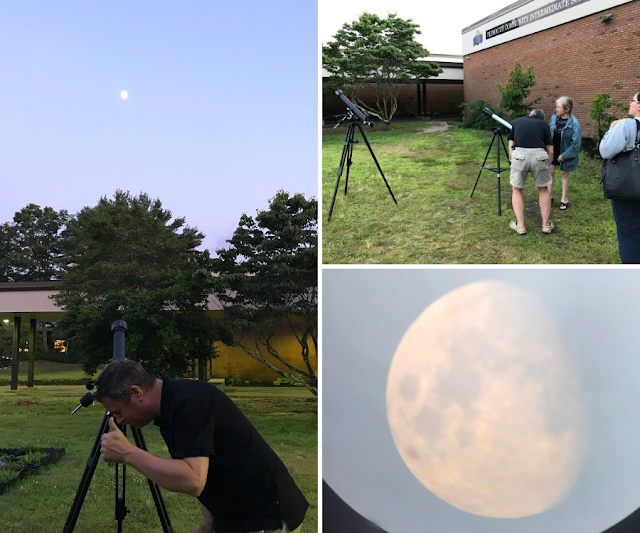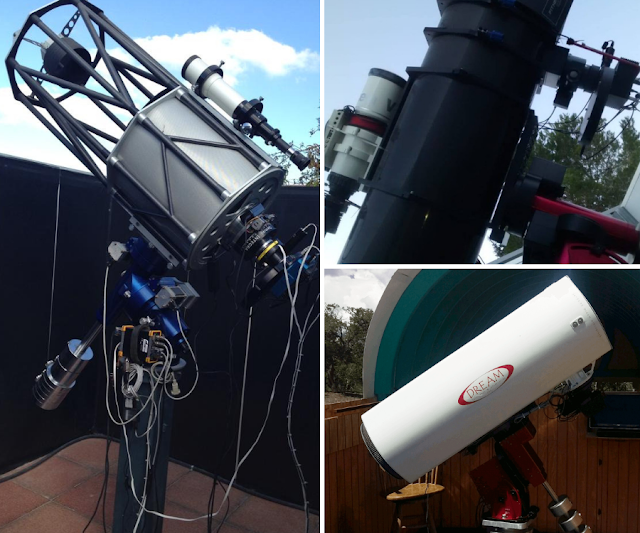There has been a new module added to Insight Observatory's ATEO Portal. This new module has been designated "Starbase". Starbase is a repository of images captured by the Astronomical Telescopes for Educational Outreach (ATEO), organized by the image target into image “sets”. These image sets can be purchased (referred to as “subscribing” to) and downloaded.
An "image set" is composed of one or more images of a specific deep-sky target or subject. Images captured as part of an image set will typically be imaged within the timespan of a few months. On the Starbase portal page, the "Image Sets" tab will display a list of all the available image sets in Starbase.
After the ATEO Portal was rolled out last year, Insight Observatory started receiving requests from image processors asking to deliver image data from the ATEO remote telescopes. Although there are a few avid ATEO Portal users who take advantage of the Scheduler and Telescope Console to gather image data, we also realized there were many image processors that simply wanted the image data from the telescopes. They had no interest in reserving time and imaging on the telescopes themselves. Therefore, we came up with an intuitive design for a new portal module that would allow portal users to browse, purchase, and download previously imaged image sets.
In the midst of developing Starbase, we were simultaneously populating the image library and by doing so taking requests of deep-sky targets from image processors. We called the process "Image Sets on Demand". As we continue to populate Starbase with image sets, we are continuing to take image data requests through our "Image Sets on Demand" form.
Starbase Subscription Rates:
Subscription rates are determined by whether you registered with Insight Observatory as a Standard or as an Educational user.
The rates as of January 2020 are as follows:
ATEO-1
To access Starbase, log into your Insight Observatory ATEO Portal account. If you don't have a portal account, you may sign up for one HERE at no cost. Once you are logged into Starbase, there is a "Support" tab to the right on the portal page that explains in-depth how to use the new Starbase module.
Read More
 |
| M13 - Globular Cluster in Hercules processed from Starbase Image Sets by subscriber Utkarsh Mishra. |
An "image set" is composed of one or more images of a specific deep-sky target or subject. Images captured as part of an image set will typically be imaged within the timespan of a few months. On the Starbase portal page, the "Image Sets" tab will display a list of all the available image sets in Starbase.
After the ATEO Portal was rolled out last year, Insight Observatory started receiving requests from image processors asking to deliver image data from the ATEO remote telescopes. Although there are a few avid ATEO Portal users who take advantage of the Scheduler and Telescope Console to gather image data, we also realized there were many image processors that simply wanted the image data from the telescopes. They had no interest in reserving time and imaging on the telescopes themselves. Therefore, we came up with an intuitive design for a new portal module that would allow portal users to browse, purchase, and download previously imaged image sets.
 |
| Screenshots of Insight Observatory's newly released Starbase image datasets repository accessed thru the ATEO Portal. |
In the midst of developing Starbase, we were simultaneously populating the image library and by doing so taking requests of deep-sky targets from image processors. We called the process "Image Sets on Demand". As we continue to populate Starbase with image sets, we are continuing to take image data requests through our "Image Sets on Demand" form.
Starbase Subscription Rates:
Subscription rates are determined by whether you registered with Insight Observatory as a Standard or as an Educational user.
The rates as of January 2020 are as follows:
ATEO-1
- Standard: $0.10 per minute of image set exposure time
- Education: $0.08 per minute of image set exposure time
- Standard: $0.18 per minute of image set exposure time
- Education: $0.15 per minute of image set exposure time
- Standard: $0.20 per minute of image set exposure time
- Education: $0.17 per minute of image set exposure time
To access Starbase, log into your Insight Observatory ATEO Portal account. If you don't have a portal account, you may sign up for one HERE at no cost. Once you are logged into Starbase, there is a "Support" tab to the right on the portal page that explains in-depth how to use the new Starbase module.









